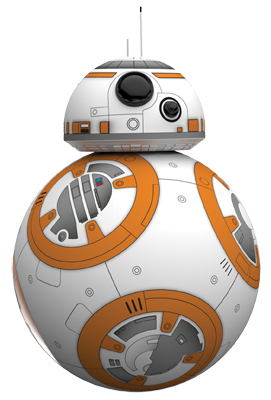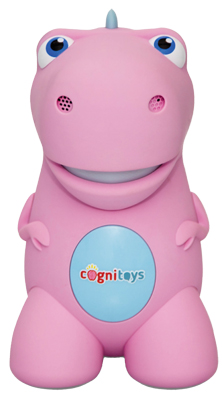What manufacturers should do to stay on top of this evolving toy category.
by Sean McGowan, founder, SMG Leisure
Toys featuring tech elements such as sound chips, programmability, or the ability to communicate with other toys are not new, but for the last few years, smart toys are eating up more and more shelf space. In this piece, I will look at several aspects of this burgeoning toy category. Some of these toys are truly groundbreaking, but both parents and toy manufacturers need to exercise a great deal of caution and forethought to make sure these toys safely deliver their intended benefit.
For the purpose of this discussion, I’ll clarify what I mean by “smart toy,” or, just as usefully, what I do not mean. I am not talking about toys designed to make your baby, toddler, or preschooler smarter. Instead, the term “smart toy” focuses on the smartness of the toy itself.

Not-So-Smart Toys
Products typified by Tickle Me Elmo, where a child presses a button (or issues a voice command) and the toy runs through a pre-programmed routine, are not considered smart toys. Some people in the industry refer to these as “watch me toys,” but I have provocatively called them “toys that play with themselves.” These toys don’t make anyone smarter, nor do they use technology that is all that impressive.
The broad category of electronic learning aids, which encompasses educational offerings from companies like LeapFrog and VTech, are not smart toys either, even though some of the tech-infused devices are pretty smart, and many of them are now connected either to each other or to the web.
Smart toys interact with other devices and/or programs, such as apps, other toys, or other devices in the area. These toys often have a capacity to learn about their environments and to respond—sometimes in subtle ways—to changes in the environment.
In some ways, products like Furby, Tamagotchi, and Webkins were the precursors to smart toys. They weren’t actually all that smart, especially compared to today’s smart toys. But I consider them to be the original smart toys because they appeared to be interactive, learn over time, and respond to changes in the environment. In fact, they were really just running on pre-set clocks, testing for a small number of changes the user made, even though they seemed to respond to the user, grow (or die, if you didn’t “feed” them), and interact.
Smart Toys 1.0
The toys I call smart toys 1.0 were effectively crude physical extensions of computer programs and apps. Think of those early apptivities—or app-based toys—that allowed kids to scan in some physical product (a little toy car, a figurine, a plastic gun) to cause changes in an app on a tablet or smartphone. In hindsight, these were little more than app-based games that invited the consumer to use a physical object other than their fingers to control the action. Why was this a good idea? It wasn’t, but it gave toymakers and retailers a way to be involved in a segment of the industry that was rapidly evolving away from them. In my view, the fundamental problem with these toys is that they didn’t allow kids to have more fun than they would have simply playing with the app.
Smart Toys 2.0
The toys I consider smart toys 2.0 are those that promote interaction between a tablet or a smartphone and the physical toy, to create an experience that is very different from—and better than—that which can be enjoyed without that interaction. Perhaps the best example is Furby Boom, but Sphero’s robotic ball (and its best-selling BB-8 version) and Ooboly also fit into this category. Plus, the entire toys-to-life sub-category pioneered by Activision’s Skylanders and now also populated by Nintendo’s amiibo, and LEGO and Warner Bros. Interactive Entertainment’s LEGO Dimensions, are also part of smart toys 2.0. While these toys are different from each other in many ways, what they share in common is the focus on both the screen—whether it’s a TV, a tablet, or a smartphone—and the toy.

Smart Toys 3.0
As technology becomes even more accessible, a growing number of smart toys either involve minimal screen-time or none at all, which brings us to smart toys 3.0. The emergence of these screen-liberated toys is due in part to backlash from parents who seek to reduce the amount of time their children spend staring at screens (which has apparently been linked to shortened attention spans and difficulty in learning). Additionally, technology that allows the devices to work simply and intuitively without a screen has emerged, such as chip sets, connection technology, and user interfaces. These toys may require a device to control, setup, or program the toys, but the focus is on the toy itself, not the screen of a tablet or smartphone.
We have seen a host of 3.0 toys in the past year, such as Anki Overdrive, which allows artificially intelligent cars to race around connectible track, as well as interactive smart toys masquerading as plain old traditional toys, such as CogniToy and an adorable reworking of a classic, Edwin the Duck. These toys are a break from the prior generation of smart toys because all of the action and fun is in the toys. Kids are not just watching or using a toy to enhance an app experience. Instead, they are using the secondary device to enhance the power of the toy.
One of the aspects I love about the newest generation of smart toys is how some of them encourage all kids to get involved with technology, including girls. LittleBits are designed with a gender-neutral color palette and can be used to create anything kids can imagine. Sphero’s BB-8 app-enabled droid is programmable and can be part of any kids’ play fantasy.
Safety First
Still, some of the same issues that loomed over the prior generations of smart toys continue to linger. First and most important is the question of security. Let’s face it: Anything that interacts with your home’s Wi-Fi network is a potential security risk, but that doesn’t mean it’s pointless to try to make the toys secure—just the opposite. It is imperative that toy manufacturers use security measures that are every bit as secure as those used to secure a teenager’s iPhone camera roll. Adults who purchase connected toys must remain vigilant that they are not serving as Trojan Horses to let hackers into their homes.
While there will almost always be a way to hack a system, the key is to make it so difficult that the hacker will seek more fertile grounds. (Like the old joke about the two campers seeking to avoid bear attacks: The first camper says he plans to wear running shoes. The other camper laughs and says, “You really think you can outrun a bear?” The first one replies, “I don’t need to outrun the bear. I only need to outrun you.”)
And hacking isn’t the only safety issue. For young children, there can be just as much danger if a toy simply serves as an entryway onto the web. Remember Commonwealth Toy’s WikiBear? Unintended consequences can ensue when you let an innocent looking toy surf the web. The idea of a teddy bear kids could use to ask unlimited questions and gain tons of knowledge seemed quite clever, but it wasn’t thought through well enough.
Accessibility is Everything
Another issue to be tackled is cost, and its inherent connection to the widening gap between consumers who can afford costly toys and those who can’t. While a very high percentage of the consumer base has access to smartphones, not all have access to the same phones or the fastest Internet connections, and I believe these toys should be designed to be as widely accessible as possible.
The cost for the consumer is not the only cost to consider—developing smart toys isn’t cheap. They require all of the traditional costs associated with getting a toy manufactured, plus extensive upfront development costs, additional bill-of-material costs, and ongoing costs, such as server costs, higher customer service costs, and the cost of operating an ongoing service: Toys as a service (TAAS).
For larger, well-funded toy makers, these costs raise the risks but can probably be justified. For smaller, less lucrative companies, these costs can be prohibitive. Companies such as Seebo, an Israel-based technology company, provide turn-key solutions that allow even the smallest companies to quickly, efficiently, and inexpensively turn their products into smart, connected toys, lowering the costs and the risks.
Keep Your Promises
Finally—and this is ultimately true of any toy—smart toys must deliver on the promise of fun. They can’t be simply showing off some clever feature, or showcasing a new connectivity breakthrough. In fact, they can’t even be simply replicating traditional play, but in a more tech-enhanced way. They have to provide original experiences that engage kids in new ways. Otherwise, who needs them?
 Sean McGowan is the founder of SMG Leisure. He has been closely following the toy industry for 30 years, analyzing product trends, cost changes, marketing practices, and other aspects of how products and companies succeed (or don’t). He also follows digital gaming, sporting goods, and juvenile products. McGowan started SMG Leisure in January 2016 to continue this work beyond the parameters of Wall Street.
Sean McGowan is the founder of SMG Leisure. He has been closely following the toy industry for 30 years, analyzing product trends, cost changes, marketing practices, and other aspects of how products and companies succeed (or don’t). He also follows digital gaming, sporting goods, and juvenile products. McGowan started SMG Leisure in January 2016 to continue this work beyond the parameters of Wall Street.

